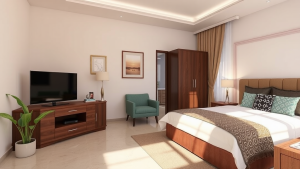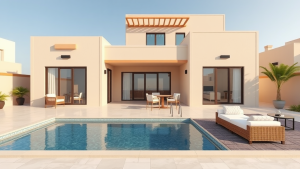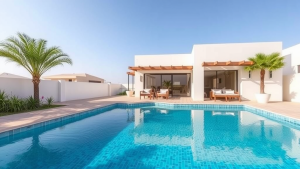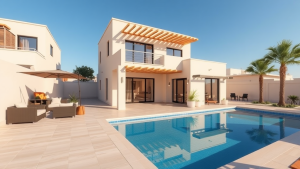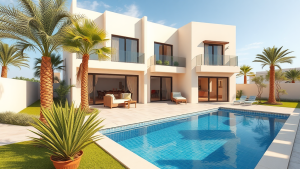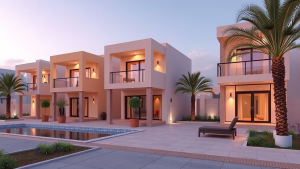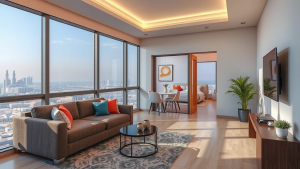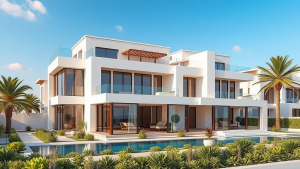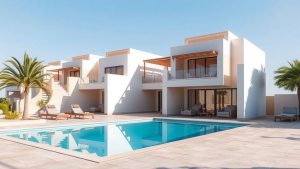Essential accessible home features for retirees
As you enter retirement, creating a comfortable and safe living environment becomes a top priority. Choosing a home with accessible features is essential for maintaining independence and ensuring you can remain in your cherished space as you age. Below are crucial accessible home features that you should consider, making your living arrangements both safe and enjoyable.
Single-level living
Opting for a single-level home can significantly enhance accessibility. Stairs can pose risks, particularly for those with mobility issues. A single-story layout eliminates the need for stairs, which can be challenging. If moving is not an option, consider a home with a master bedroom and bathroom on the main floor.
Wide doorways and hallways
Look for homes with wide doorways and hallways. Standard door widths may not accommodate walkers or wheelchairs comfortably. Aim for at least 36 inches in width. This small change can greatly increase mobility and accessibility throughout your living space.
Accessible bathroom features
Restroom accessibility is crucial. Here are some features to consider:
- Grab Bars: Install grab bars near the toilet and in the shower for added support.
- Walk-In Showers: Opt for a walk-in shower instead of a bathtub. This minimizes the risk of slips and falls.
- Comfort Height Toilets: Select toilets designed at a higher level to ease sitting and standing.
- Non-Slip Flooring: Use materials that offer traction to help prevent accidents.
Kitchen accessibility
The kitchen is often the heart of the home, so it’s essential to ensure it’s workable for your needs. Here are a few suggestions:
- Lower Countertops: Choose countertops at a lower height to allow for easy access while standing or sitting.
- Pull-Out Shelves: pull-out shelves in cabinets makes reaching for items much easier.
- Easy-Clean Surfaces: Select surfaces that are easy to clean, minimizing all-around physical stress.
- Smart Appliances: Look into energy-efficient appliances that have user-friendly features, such as touch controls.
Lighting considerations
Bright and ample lighting is essential, especially as vision may change with age. Here’s what you should focus on:
- Natural Light: Choose homes with large windows to let in plenty of natural light.
- Adjustable Lighting: Install dimmers or adjustable lighting to set the mood and improve visibility.
- Task Lighting: Use task lights in work areas to enhance visibility and reduce strain.
Outdoor access
Accessible outdoor spaces are equally important. You want to enjoy your garden or patio without obstacles. Consider the following:
- Ramps: Install ramps for easy entry or exit, particularly if steps are involved.
- Flat Surfaces: Ensure sidewalks and driveways are flat and stable to avoid tripping hazards.
- Seating Areas: Create comfortable seating areas for enjoying the outdoors.
Smart home technology
Smart home technology can offer added convenience and safety. Explore options like:
- Voice-Activated Systems: Devices that respond to voice commands can be beneficial for those with limited mobility.
- Security Systems: Ensure you have adequate security features, like cameras and alarms, that you can easily monitor.
- Smart Thermostats: These allow you to adjust home heating and cooling from your phone, making it easier to manage your living environment.
Ultimately, ensuring your home features optimal accessibility will create a safer and more comfortable living experience during retirement. Investing time and resources into these modifications can significantly enhance your quality of life, allowing you to remain independent and enjoy your surroundings for years to come.
Benefits of modifying your home environment for aging in place
As we age, our needs and abilities change. Creating a home environment that supports these changes is essential for maintaining independence and enhancing quality of life. Making modifications to your living space can provide numerous benefits that empower retirees to age gracefully and comfortably in their homes.
Accessibility is one of the most important aspects of a retirement-friendly home. Implementing accessible features can drastically reduce the risk of accidents and injuries. For example, adding grab bars in the bathroom or ensuring clear pathways can help prevent falls, one of the leading causes of injury among seniors. Simple changes like these can create a safer living environment that allows you to move confidently throughout your home.
Another vital benefit of modifying your home is improved mobility. As mobility can become limited with age, it’s crucial to create a space that accommodates wheelchairs or walkers if necessary. Widening doorways, lowering countertops, and eliminating steps can help ensure smooth movement, giving you the freedom to navigate your home easily. Such modifications encourage independence, reducing reliance on family and caregivers.
Comfort is also enhanced by making adjustments in your living environment. Consider investing in adjustable furniture like recliners or beds that can change positions. These not only provide comfort but can also make it easier for you to get in and out of a sitting or lying position. Additionally, installing proper lighting can help prevent eye strain and ensure you can see clearly, reducing the risk of trips and falls.
Energy efficiency is an often-overlooked advantage of home modifications. Aging in place means you want a home that supports your lifestyle, and that includes managing costs. Upgrading your home with energy-efficient appliances, insulation, and windows can save money on utility bills and create a more comfortable indoor climate. A well-insulated home is also less prone to extreme temperature fluctuations, benefiting your overall wellness.
Social interaction and engagement can significantly improve mental health. Having a home environment that is accessible for visitors encourages friends and family to visit more often, which can diminish feelings of loneliness and isolation. Including features like an open floor plan or outdoor spaces for gatherings can enhance your ability to host friends and family, promoting an active and fulfilling social life.
Moreover, modifying your home allows you to tailor the space to fit your lifestyle and hobbies. Perhaps you have a passion for gardening. A raised garden bed or accessible patio can make it easier for you to enjoy this activity. Or if you love cooking, designing a kitchen that caters to your needs can reignite your passion for preparing meals. A home that reflects your interests and supports your activities contributes to a happier and healthier life.
Here are some practical modifications you might consider:
- Install grab bars in the bathroom and hallways.
- Widen door frames to accommodate walkers and wheelchairs.
- Use lever-style door handles for easier access.
- Add non-slip flooring throughout the home.
- Ensure adequate lighting in all areas to improve visibility.
- Create a single-level living space to avoid stairs.
- Use motion sensor lights in hallways and bathrooms for convenience.
The benefits of modifying your home environment for aging in place are numerous. From increased safety and comfort to enhanced social interaction and energy efficiency, each change contributes to a better quality of life. By taking proactive steps to adapt your living space, you can create a welcoming home that supports growth, independence, and joy in your golden years. Empower yourself to enjoy life to the fullest, all from the comfort of your home.
Making your home accessible is a vital step for retirees who want to enjoy their golden years comfortably and safely. By integrating essential accessible home features such as wider doorways, grab bars in key areas, and non-slip flooring, you can significantly reduce the risk of accidents and promote mobility. These modifications not only enhance your day-to-day living but also foster independence, allowing you to maintain a sense of dignity as you age in place.
The benefits of adjusting your home environment extend beyond safety. A well-designed, accessible home can reduce stress for both you and your loved ones. By creating a living space that caters to your current and future needs, you are taking proactive steps toward a fulfilling life. You will be better positioned to socialize with friends and family, pursue hobbies, and engage in your community, all of which contribute to a higher quality of life.
Remember that accessibility modifications can vary from simple adjustments to extensive renovations. Whether you opt for minor changes or larger projects, it’s important to tailor your home to fit your unique needs and preferences. Staying engaged in the planning process empowers you to create a welcoming environment that reflects your lifestyle.
Ultimately, investing in accessible home features fosters a sense of security and promotes overall well-being. Embrace these changes as an opportunity to enhance your daily living experience, allowing you to age gracefully and enjoy the comfort of your cherished home for years to come. Your future self will thank you for the choices made today.
19% off – luxury 1 bedroom villas with swimming pools in hadaba Hurghada under 50k — stylish homes for irish winter escapers
20% off – beachfront studio apartments with balconies in soma bay Hurghada under 50k — investments for irish investors




